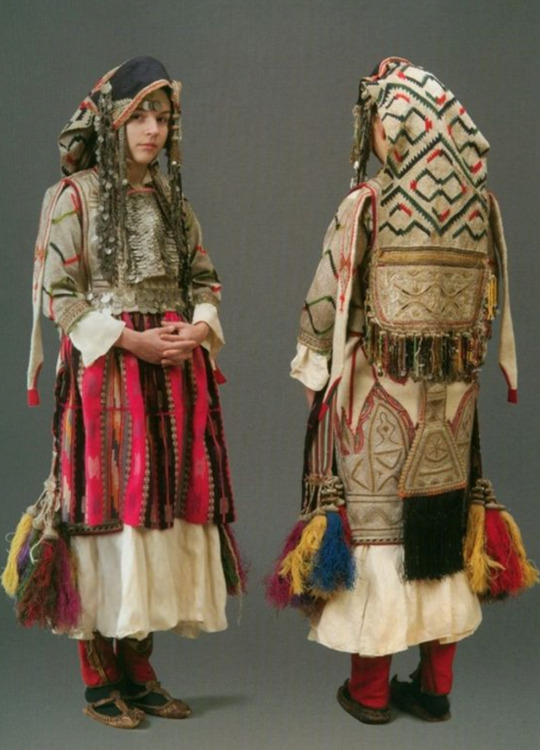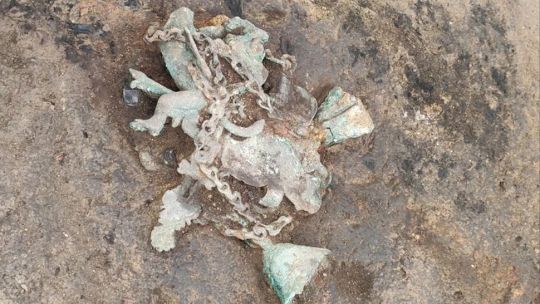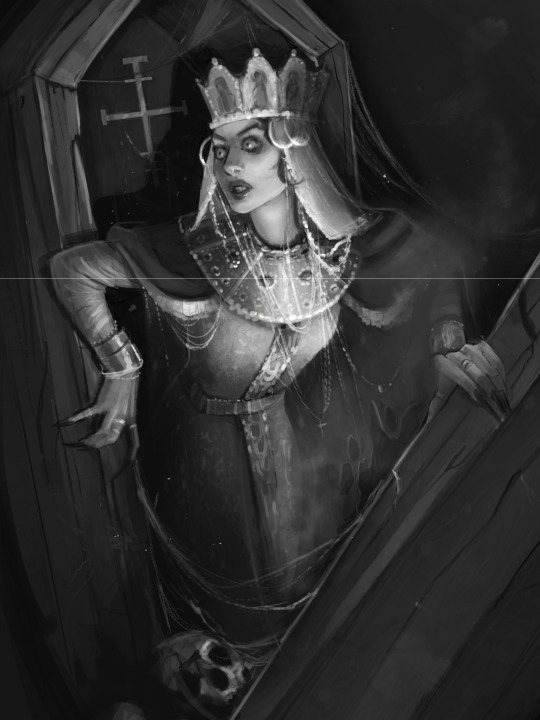#slav is the spirit
Note
rakija > vodka 🇧🇦🇧🇦🇧🇦🇧🇦🇧🇦🇧🇦
Chartreuse > rakija if those monks would stop sucking each other off and focus on their craft
#anonymous#ask#alcohol /#slav sin confession: I've never had vodka I don't handle strong spirits well#the two times I've had absinth I sipped a tiny bit and ended up unconcious on the floor
7 notes
·
View notes
Text
just remembered how one day my bro came home and I met him saying "listen, this is crazy, but I think domovoy is exist and ours just stole my peaches"
2 notes
·
View notes
Text

#no okay cause I’ve been thinking about that (second) movie I watched tonight like nonstop today#*last night#I’ve already recommended it to 2 people since watching it and I’m planning on spreading the good word tomorrow also#I even watched a tv show one of the actors was in#(show was called School Spirits and it came out this year#it absolutely should’ve been a comedy with sad moments#instead of what it was which is a drama with sorta funny moments#but that’s for another slav)#literally such a good movie#again it’s called Dramarama 2020 (or 2021 depending on who you ask)#it’s on Hulu and you’ve *gotta* watch it#slav#slav every day#voltron
7 notes
·
View notes
Text
The new Warlockracy video on Fallout Online is a fantastic look into the Eastern European game modding and dev scene.
I dunno why any lame ass Western dev gets famous when you have Cvet from Russia, who after receiving a cease and desist from Zenimax to stop using the Fallout IP for his engine, told them to fuck off, that God is witness to their transgressions and if anyone from Zenimax tries to approach him in real life he will assault them with a baseball bat.
4 notes
·
View notes
Text
Weimar era parents: our children are going to break the cycle of abuse... we are raising a generation in the spirit of liberalism
Their son: (slamming out telegram) "bomb that kills all slavs"
3K notes
·
View notes
Note
I love your COTL art! I was wondering, what are your design inspirations for the Lamb’s clothing, if you have any off the top of your head? It’s gorgeous!
Oh I've been waiting for this question. Ok! Design Inspo time!
I like clothing that represents the character, and Lamb (mine at least) is a person who came from a folk culture. I think of Slavic clothing: Belarus, Czech, Serbia etc. etc. You get the point. I grew up with Slav fairytales and drooled over these illustrations when I was younger.



I wanted to capture the spirit of these illustrations cause I thought it's a perfect fit for my vision of the story in "Cult of the Lamb". Now, Slavic clothing is a BIG inspo for their clothing but it's not only, It's also Indian, Moroccan, Swiss, Greek, Balkan, and Swedish even, it's an eclectic mess of everything.






What all of these clothing have in clothing have in common is ornate patterns, big flowing comfortable cloth, and bright colors. Which for me fits perfectly with Lamb's white wool.

129 notes
·
View notes
Photo

The Ale [Bulgarian mythology; Slavic mythology]
Many cultures from around the world have tales of powerful supernatural creatures – be they spirits, deities or monsters – who can create bad weather. In Slavic folklore, this role is taken by the Ala, a type of malevolent meteorological spirits associated with storms, hail and hurricanes. They are found in Serbian, Macedonian and Bulgarian beliefs (in the Bulgarian version, these creatures are called Hali (singular Hala).
Ale are demonic creatures with serpent-like bodies and the head of a horse, though their appearance varies a lot between stories and iterations. They usually have wings, and sometimes three heads or a sword-like tail. The Ale are shapeshifters and can also assume a human form. Sometimes, they become ravens.
Inherently malicious, the Ale are notorious for destroying or stealing crops, uprooting trees and creating powerful storms to devastate orchards. These demons have the ability to transform into a thick fog cloud: when they take this form and descend on farmland, the corn can no longer ripen.
Interestingly, these monsters are said to avoid lakes and rivers. Being inherently solitary creatures, an Ala usually lives alone in a cave and will even defend its habitat if other Ale approach.
When an eclipse happens, it is said that an Ala is trying to devour the sun, as their hunger is insatiable.
Sources:
Conrad, J. L., 2001, Male Mythological Beings Among the South Slavs, University of Kansas, SEEFA Journal 4(1), pp. 3-9.
Bane, T., 2014, Encyclopedia of Demons in World Religions and Cultures, McFarland, 416 pp.
Avilin, T., 2007, Meteor Beliefs Project: East European meteor folk-beliefs, WGN, Journal of the International Meteor Organization, 35:5, p.113-116.
(image source: John Wigley on Artstation)
271 notes
·
View notes
Text

'Magical' Roman Wind Chime with Phallus Found in Serbia
Phallic objects like this were common in the Roman world to ward off evil.
Archaeologists have unearthed a Roman wind chime called a tintinnabulum — featuring a prominent phallus — at an archaeological site in eastern Serbia.
Such objects, which were hung near the doorways of houses and shops, were believed to serve as magical protection for the premises. This one was discovered on the porch of a large home on a main street in Viminacium, an ancient Roman city, the extensive ruins of which now lie near the Serbian town of Kostolac, about 30 miles (50 kilometers) east of Belgrade.
"The building was destroyed in a fire, during which the porch collapsed and fell to the ground," Ilija Danković, an archaeologist at the Institute of Archaeology in Belgrade, told the Serbian-language website Sve o arheologiji.
Tintinnabulums were designed to catch the wind, supposedly so their noise and unusual appearance would frighten off evil spirits and ward off the curse of the evil eye, which was greatly feared in antiquity.
Viminacium was the civil and military capital of Rome's Upper Moesia province from the first to fifth centuries, until it was sacked by the Huns under Attila in 441. The city was rebuilt under the Byzantine emperor Justinian, but it was finally destroyed by invading Slavs in about 535.

Magical phallus
This is the second tintinnabulum found in the ruins. The first is now in a private collection in Austria; nothing is known about its discovery, he said.
However, the newly discovered tintinnabulum was discovered in its full archaeological context. "As soon as we started uncovering it, we knew immediately what we had discovered," he said.
The latest tintinnabulum from Viminacium is made of bronze, but it is being kept surrounded by soil until it can be properly restored. As a result, its exact configuration isn't known. But it is centered on a "fascinum" — a portrayal of a magical phallus — with two legs, wings and a tail, he said.
"Judging by what can be seen … it had four bells and the chain from which it hung," Danković said, adding that there also seemed to be other elements to the design not seen on other tintinnabulums.
Roman beliefs
The symbol of a phallus wasn't always erotic or obscene for the ancient Romans, Danković said. "It was a bringer of good fortune and happiness, and an efficient weapon to combat the evil eye," he said. "For this reason, phalluses can be seen everywhere in the Roman world, from wine cups to the amulets worn by children."
He added that the symbol was often publicly displayed to summon prosperity and deter thieves.


The discovery of the tintinnabulum is evidence that Viminacium was "in every sense a part of the Roman world," Danković said.
Not only did its people share many Roman beliefs, he said, but it's likely that the tintinnabulum was imported from elsewhere in the empire, showing that there were social elites at Viminacium who were willing to pay a significant amount of money for such an object.
Ken Dark, an archaeologist and historian at King's College London who wasn't involved in the discovery, said the Viminacium tintinnabulum was a type of "apotropaic" amulet that was designed to ward off evil influences and give protection to people or their property.
Such amulets "were common in the Roman world, and these sometimes took forms which would seem very strange — or even comical — to us today," he told in an email.
By Tom Metcalfe.

#'Magical' Roman Wind Chime with Phallus Found in Serbia#tintinnabulum#phallus#bronze#ancient artifacts#archeology#archeolgst#history#history news#ancient history#ancient culture#ancient civilizations#roman history#roman empire#roman art
97 notes
·
View notes
Text
cheatsheet to your slav folkloric downfall
Since several people had questions about the lore that inspired this poll, I'll jot some notes down about what I was thinking. All of these have long and complex tradition that can't possibly fit in a tumblr post, but there's tons of great content on tumblr alone, so pls feel free to scroll through my tags for more info (you may like "demons", "witches", or "original art" for contemporary interpretations of the lore...) or use this post as a springboard for more research.
Because much of Slavic folklore was passed down orally and not written down, and because it covers a wide geographical range and is told in different languages, there are many versions of common stories, tropes, characters, etc.
***
Baba Yaga is a witch, super popular, tons of great lore about her, historical and contemporary. She was never just one single entity, but rather a version of herself in many different stories (more like fanfiction than like canon). Her character is inherently unpredictable, existing outside our societal rules and moral compass, and the variability in lore makes her even more impossible to predict. A young woman named Vasilisa did manage to perform all of Baba Yaga's tasks to her instruction, but not without her own magical help. Sometimes Baba Yaga is helpful and reasonable, and sometimes she will just casually eat you like a handful of berries. You never know what you're going to get.
The fern flower is a beautiful mythical flower that offers its holder immense knowledge and magic. It blooms very briefly only once a year during Noc Kupały (in Polish, the EN is Kupala Night). If you want to find it, you'll probably grab your boyfriend (gender neutral) around dusk and poke around your local woods for a while before giving up and just making out and then meeting up with your friends afterwards like "did you find it?" "no we didn't find it :( did you find it?" "nooo :(". Really, this is about seducing the boy you like, since you probably need magic just to see the flower anyway. If you do manage to find it and pick it, tons of greedy demons will appear and chase you to attempt to take it from you (and your life). You have to outrun or outsmart the demons. The demons may be metaphors for the corrupting forces of great power.
There are tons of ways to get lost in the woods. Some people help themselves by tying ribbons to trees as they go, but anything can spook you -- you can run into a demon, a werewolf, a ghost, a witch, a cat, anything -- and if you have to run away, you will most likely lose your way in the process. More specifically, if you have annoyed a leshy (a forest spirit/god-type thing who protects nature), he will use magic to confuse you, and even if you're very good at Not Getting Lost In The Woods, you're kind of screwed. You think YOU won't piss off the Leshy? Oops you just stepped on his favorite beetle -- screwed. Leshy can be placated with offerings of food and drink, but sometimes he needs something bigger...
There are actually lots of hot girls who live in lakes, much to the delight of about 20% of you, but probably the most common are the rusalki -- dead girls who experienced some tragedy in life, probably ending in drowning, and are now exacting revenge on the living, especially men. They will seduce you, take you into the water, and drown you with their hair, or possibly tickle you to death. Baby marry me, amirite? The original rusalka lore was probably nicer to them, treating them more like water spirits than vengeful ghosts. Rusalki are not mermaids and appear as women with legs. We do have mermaids, but usually these are river or sea beings -- the most famous is probably Syrenka Warszawska (the Warsaw Mermaid) who lives in the river Wisła and will not attempt to kill you unless you're trying to invade Warsaw, but also she's a warrior queen and you have no shot.
Slavic mythological entities love riddles, and if you're good at riddles you are really going to help yourself, but you don't want to get into that situation unless you have no other choice. A common demon you meet on the side of the road will probably not give you a hard one, but Poludnica (the Slovak name) will find you at high noon while you're working hard in the fields and the sun's been beating down on your head since dawn and you're feeling woozy and dehydrated, and she'll give you the hardest riddle you've ever heard, and you're going to blow it, and she's going to cut off your head with her scythe or give you heat stroke. If it's any consolation, she may be hot (pun intended). Pro tip: you may also wield riddles to your advantage. Demons are as egoistic as you are and can be enticed into solving your riddle. If you stump them, you may assure your safe getaway.
Human characters in Slavic lore tend to be young and naive, representing the listener of the tale, since they can't use magic or navigate the world they are entering. Knowledge and magic are two sides of the same coin, so if you want to survive, you will need to gain some wisdom (learning some riddles will help). Being nice is not good enough, but! If by being nice you manage to seduce someone who has access to knowledge and magic, or get adopted by a bored witch with an axe to grind, you'll really help yourself out.
The path to the endless dead wood is guarded by a giant magical cat, whose name I never knew but have recently learned that the Russians call him Baiyun (latinized name, obvi). If you ask Vasilisa, she'll tell you that sometimes he lives with Baba Yaga, but generally he hangs out on the boundary to some other dimension. Probably, if you go to meet the cat, it's because somebody sent you there to get rid of you, so if you survive the cat, whoever is trying to kill you will probably keep trying so fyi. Baiyun will purr or tell a tale in such a soothing way that you fall asleep, and then he'll eat you. If you manage not to fall asleep, you may attempt to catch him and earn magic. But probably you're cat food.
***
There you have it. If you learned your story differently, let me know! And if you're ever lost in a Slavic forest, you can put your clothes on inside out and maybe that'll break the magic. Good luck.
#slavic folklore#your slav folkloric downfall#demons#witches#deities#baba yaga#leshy#original art#original writing#rusalka#poludnica#poludnitsa#cat baiyun
193 notes
·
View notes
Note
Hey slav! Please tell us, what did you think of the shows you've seen so far? How was Respite live?
Keep on rocking!

I could see Ghost a hundred times in a row and never get bored. The shows are amazing as always, I have zero complaints. Respite On The Spitalfields on the first night hit me like a ton of bricks, chewed and spit me out!! I never even considered the possiblity of them playing it on this tour so this was a giant surprise to me, and the song is very dear to me personally so I was overcome with emotion. I swear I was nearing an out of body experience there akin to the first time I heard the song in March last year when the first notes hit. I was gobsmacked.
Papa is very visibly in good spirits and I love that for him. He's happy, he's jumpy, you can really tell he's having the time of his life. And he sounds so damn good! Ghouls and Ghoulettes are wonderful as always. The energy is just unmatchable. I love the new stage/backdrop, the changes may not be that significant but they're definitely an improvement. The lighting is fucking spectacular. Everything is just so perfectly thought out and executed, and you can tell that a ton of work has gone into making it work so well. Seeing Ghost is a pleasure and privilege, always.
164 notes
·
View notes
Note
Hi, how are you? I would like to propose a Buddha, Thor request with a reader who is the goddess of Slavic mythology, or rather winter and death. She is usually strong and formidable. Her image symbolizes the combination of birth, fertility and death. The Slavs were not afraid of her, but revered. It was believed that the goddess always observes and reminds of the incessant passage of time (I would like to see the development of relationships)

Well mark him down as scared & horny.
Buddha isn’t necessarily scared of death. He appreciates it as a process in the lifecycle, before reincarnation and our inevitable transition into Nirvana.
He hadn’t considered how powerful she’d be, or how beautiful.
His usual ‘chill guy’ tactics don’t work on her. She seems to not appreciate his go with the flow spirit or how happy go lucky he is. At first.
What she does seem to appreciate is his honesty, and love of humans.
Buddha has very little guile (except when it comes to the ‘higher ups’) so he’s transparent in what he wants and needs, which she would find very comforting.
Guessing games are not her stride.
She too loves humans, and takes her role in death very seriously to give everyone peace and comfort in their final moments. A respect for the race and their indomitable spirit is something they share.
Secretly loves the candies he give her.

Have a lot of opportunity to interact with one another, as they are gods on the same par and similar religions.
Norse and Slavic gods have quite a bit of cross over; most likely due to migration. So he is aware of the goddess of death before they even had their first conversation.
Which are not many.
Thor, as we all know, is not much of chatter. He’s the tall stoic type, which plays very well into Goddess-san’s aesthetic.
Their relationship is built on a lot of long, intimate, knowing silences. But also a great deal of respect.
They respect each other as old gods, their duties in the world, and each other as an individual. Thor appreciates her dedication to duty and she appreciates his devotion to honor.
Her beauty is something he enjoys, but it’s her formidableness that gets him going.
Being with a powerful woman is something he enjoys. He would never be with someone less than.
Try to make as much time for one another as possible, as quality time is their love language, but it is hard with their very busy schedule.
#;ask and ye shall receive (request answers)#record of ragnarok#record of ragnarok headcanons#record of ragnarok hc#ror headcanons#ror hc#thor x reader#ror thor#shuumatsu no valkyrie thor#record of ragnarok thor#thor#buddha x reader#ror buddha#buddha#shuumatsu no valkyrie buddha#record of ragnarok buddha#headcanons
178 notes
·
View notes
Text
Moreover, the concept of monotheism was alien and strange to the pagan Polabians. A single god jealously demanding exclusive devotion and worship was conceptually unpalatable in the world of a multiplicity of gods and spirits characterized by general religious tolerance. A world, where gods of other people, although not their own and not worshipped were as real as their own deities. The Polabian Slavs did not comprehend why exclusiveness was demanded and after a forceful conversion, as evidence from Szczecin shows, they worshipped old gods alongside the Christian God. The Polabians did not negate the existence of the Christian god but simply added yet another deity to their old pantheon, albeit strange and alien. It is worth noting that a similar attitude was observed among Scandinavians. During the raid on Courland, Swedish warriors consulted through divination various gods of their own to gain their divine support for the campaign. Apparently the outcomes of these divinations were interpreted as unfavourable. On someone’s suggestion they performed one more rite for a Christian God. This time the outcome was favourable and they succeeded in their enterprise. This account clearly shows that for non-Christian Swedes the Christian God was yet another deity that existed and although not their own, it was as real for them as Odin or Thor.
- Perception of Christianity by the Pagan Polabian Slavs, Roman Zaroff
63 notes
·
View notes
Note
were there at all household private cults and prayer to the gods? or was it all done in nature with the community?
very fun question - and as with most things regarding pre-christian slavic beliefs, complex to answer!
short answer: from archeological and ethnographic research, we can say with considerable confidence that spiritual beliefs for pre-christian slavs permeated every aspect of life, and so basically every place; there were both personal religious rituals and responsibilities, as well as those of the given community as a whole.
now, for a longer answer under the cut, let's start with a great quote from good old Gieysztor:
The corners of the house and homestead, the field, no man's land, and no man's waters, forests, mountains, and clouds were all inhabited by beings proper to them, who received the worship they deserved, that is, appropriate offerings and prayers made in the house and in the yard, in the field and at the crossroads, by the springs, by rivers and lakes, at the foot of trees of peculiar kinds and ages, by the stones and rocks, in the very mountains.
due to the scarcity and nature of the sources we have (so, for example, usually medieval christian chronicles) and the way folk culture absorbs new religions while retaining a plethora of very old beliefs often leading to the lines between them getting blurred, we have to remember that we are working within a framework of the most probable explanation - and rarely a 100% certainty. while I know that most of you here are well aware of that, I like to bring it up again from time to time.
for a long time there was great debate among the scholars of slavic beliefs about whether any sort of separate sacred space was ever present - like temples, for example, with devotional items and the separate social function of priests, and other standard religious structures. but then, as further research was conducted, it became clear that slavs had both this smaller, personal idea of a cult of gods and spirits, as well as a greater communal one, oftentimes reinforced by the presence of oracles, priests, or members of the community specifically dedicated to leading rituals and sacrificial feasts.
when it comes to this private idea of venerating deities (and spirits, and ancestors) by an individual or, by extent, a family within one household - while we know it must have existed, and in more form than one, as anthropology, folk oral culture, and comparative studies assure us - we are presented with two main obstacles making this study more difficult.
one, chronicles and other great sources for quite obvious reasons will focus mostly on greater events - festivals, communal celebrations, temples, and other religious behaviours that could have been experienced or observed by a stranger, or be worthy enough of relaying to strangers.
two, bigger objects such as statues or ritual stones, are much easier to be identified as ones of religious importance. with small objects found on sites of typical households it becomes more difficult to ascertain whether the figurine or clay vessel could have been a part of an altar - or whether it was just an object of everyday use, a toy, or an ornament. if any of you are into archaeology to any degree, you'll know exactly what that struggle is. and then, many personal objects, let's call them, could have had magical meaning and use - but not necessarily a religious one, as oftentimes magic was seen as separate from dealing with deities.
many prayers were simply forgotten, some turned into folk songs or spells, others got absorbed by the new religion and lost their original agency - and so, for prayer specifically, it is rather hard to know how it might have truly worked for pre-christian slavs.
still, both historically and in the contemporary context - when we speak of reconstructive paganism - while the communal cult was and is a crucial vital part, the personal, individual worship plays a part just as meaningful.
114 notes
·
View notes
Text

#between my hobbies#my food choices#and my general body pain (but mainly back pain)#I am an old woman in mind body and spirit#slav#slav every day#voltron
8 notes
·
View notes
Text
The Big Four - American Gods AU
Hiccup is a pet store employee and a volunteer in an animal rescue group. He adopted a black cat named Toothless with bicolor pupils from an animal shelter in high school and has kept it ever since. Every time he sees an animal in trouble, he instinctively rescues it.
The green chameleon found by the street is the per belonged to the youth goddess, the injured brown bear rescued in the forest is actually the family of the goddess of war, the hummingbird with a broken wing is actually the messenger of the God of Winter, and so on. The old gods hide their identities and live as usual humans in the human world, and are connected with Hiccup for his help with the animals, giving him quiet attention and playing tricks on him. However, the peace ended recently, when some of the old gods discovered that a horse Hiccup had been helping to feed turned out to be the Dark God's spirit animal.
Hiccup’s memory was blocked and he did not know his true identity was Vidar, the Norse God of primitive nature and forest. The dark god used the contradiction between human and nature to trigger the war of the gods, and then the Moon God blocked his memory as a god. The scar left on his lip during the war is the key to unlock his memory.
- Jack Frost -
The elusive silver-haired boy, an apprentice at an antique toy shop, is actually Jokul Frosti, the God of Winter. He participated in the great in war of the gods and had his memories stolen. North helped him disguise as an apprentice to find his identity, since then he has been in the identity of Jack Frost and is trying to find the old gods around the world. After learning that his hummingbird had been saved by Hiccup, Jaco secretly visited him on a snowy winter day. Due to the weather, Hiccup thought Jack was a phantom at that time. He would play pranks on Hiccup but will help him out when Hiccup is actually in danger.
- Rapunzel -
The real identity of this girl that’s living on the hill tower house was Idun, the Norse goddess of youth. She was in charge of the golden apples that could keep the gods young in the age of the old Gods. However, due to the chaos of the war of the gods, she transferred the power of these golden apples to her long hair, and was the only god who did not need believers to sacrifice. Did not participate in the Great War of gods, but disappeared after that. Since Sunday is the Idun day of the sun so she often appears on Sunday, also known as Miss Sunday. The forces from all across the world desperately sought her to use her power. Knows Hiccup’a true identity the first time she saw him.
- Nicolas St. North -
The winter sun god, who the Slavs believed represented the weak and old sun, was defeated by the Black God and died, but would be revived on the winter solstice as the new god Koleda (meaning "Christmas "). He was the god of war and war in Slavic mythology, and was the supreme god among the Slavs along the Baltic Sea. The War of the Gods ended in defeat when Hiccup was used, and then they tried to find all the old gods to prevent the return of the Black God.
- Merida -
The keeper of pastures and forests, her real identity is one of the major gods in Celtic mythology, Morrigan, the goddess of war. She was once the main object of worship for the armies in the Old Gods era, and had a close relationship with the nature god Hiccup, who was indirectly used because she did not participate in the great war of the gods. Since then she has been watching his movements and alert for the return of the bla
#rise of the brave tangled dragon#how to train your dragon#tangled#rapunzel#brave#hiccup#merida#mericcup#httyd#jack frost#the big four#jackunzel#rotg
100 notes
·
View notes
Photo




SLAVIC VAMPIRES
• modern Polish — upiór, upir, wąpierz, wupi
• Czech and Slovak — upír
• Ukrainian — упир (upyr)
• Russian — упырь (upyr')
• Belarusian — упыр (upyr)
• Old East Slavic — упирь (upir')
A demonic being from Slavic folklore, a prototype of the vampire.
🦇 The term upiór was introduced to the English-language culture as a "vampyre", mentioned by Lord Byron in “The Giaour“ in 1813, described by John William Polidori in "The Vampyre" in 1819, and popularised by Bram Stoker's “Dracula”. With the development of mass culture, he returned as a "vampire" recognizable in literature and film.
🦇 Slavic belief indicates a stark distinction between soul and body. The soul is not considered to be perishable. The Slavs believed that upon death the soul would go out of the body and wander about its neighbourhood and workplace for 40 days before moving on to an eternal afterlife. Thus pagan Slavs considered it necessary to leave a window or door open in the house for the soul to pass through at its leisure. During this time the soul was believed to have the capability of re-entering the corpse of the deceased. Much like the spirits mentioned earlier, the passing soul could either bless or wreak havoc on its family and neighbours during its 40 days of passing. Upon an individual's death, much stress was placed on proper burial rites to ensure the soul's purity and peace as it separated from the body. The death of an unbaptized child, a violent or an untimely death, or the death of a grievous sinner (such as a sorcerer or murderer) were all grounds for a soul to become unclean after death. A soul could also be made unclean if its body were not given a proper burial. Alternatively, a body not given a proper burial could be susceptible to possession by other unclean souls and spirits. Slavs feared unclean souls because of their potential for taking vengeance.
🦇 From these deep beliefs pertaining to death and the soul derives the invention of the Slavic concept of Ubır. A vampire is the manifestation of an unclean spirit possessing a decomposing body. This undead creature needs the blood of the living to sustain its body's existence and is considered to be vengeful and jealous towards the living. Although this concept of vampire exists in slightly different forms throughout Slavic countries and some of their non-Slavic neighbours, it is possible to trace the development of vampire belief to Slavic spiritualism preceding Christianity in Slavic regions.
🦇 An upiór was a person cursed before death, a person who died suddenly, or someone whose corpse was desecrated. Other origins included a dead person over whom an animal jumped, suicide victims, witches, unchristened children, and those who were killed by another upiór.
🦇 Slavic vampires were able to appear as butterflies, echoing an earlier belief of the butterfly symbolizing a departed soul. Some traditions spoke of "living vampires" or "people with two souls", a kind of witch capable of leaving its body and engaging in harmful and vampiric activity while sleeping.
#Vampires#Upiór#slavic culture#slavic folklore#slavic mythology#slavic#slavs#pagan#poland#czechia#czech republic#slovakia#ukraine#russia#belarus#posted by me#🔮
263 notes
·
View notes